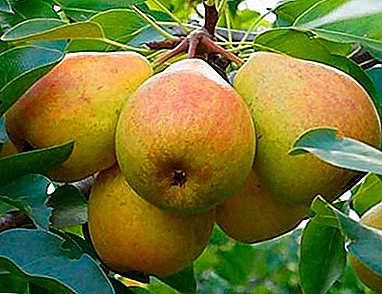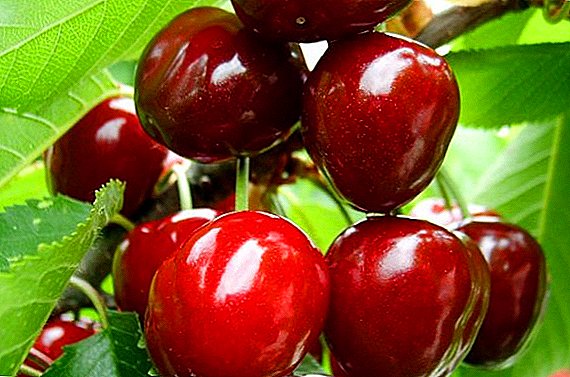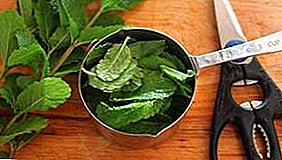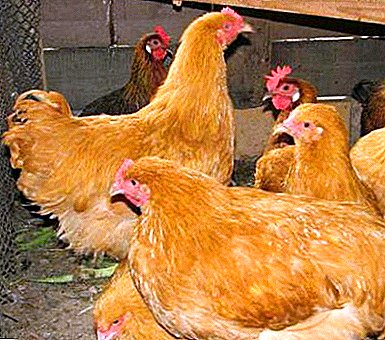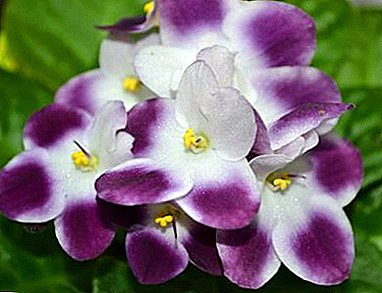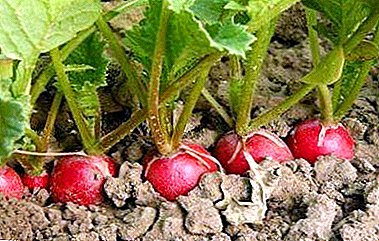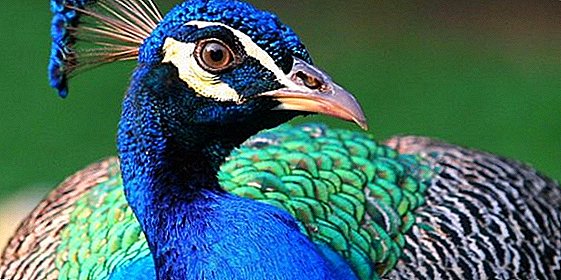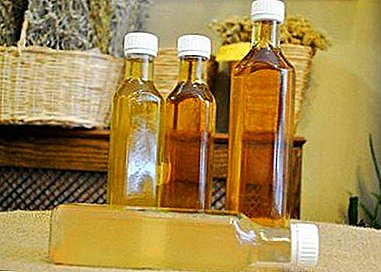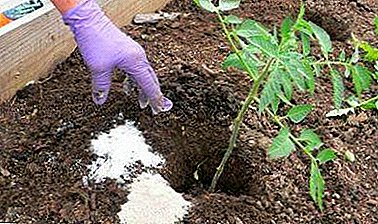
Almost every gardener grows tomatoes on his land. This culture needs timely feeding. Most often for this purpose phosphate fertilizers are used.
In the article we will consider what feedings are for seedlings and adult tomatoes. What are their advantages and disadvantages? How to find out what the plant lacks?
You will learn how to properly make a solution and apply phosphorus-containing fertilizers. As well as instructions on the use of superphosphate.
Advantages and disadvantages
The use of various phosphorus-containing fertilizers for growing tomatoes has many advantages., among which:
- increasing the resistance of the culture to various diseases;
- yield increase;
- high shelf life tomato;
- improvement of organoleptic characteristics.
The advantages include the fact that phosphate fertilizers are absorbed by tomatoes in the right amount for their development.
The disadvantage is the fact that simple and double Superphosphate when entering into the ground is not advised to mix with other mineral fertilizers, for example, nitrate:
- sodium;
- calcium;
- ammonia.
Phosphorus contained in phosphate rock, the plant becomes available only after 60-90 days.
How to determine the lack of this element in the soil?
 This element has the following feature - its surplus in the soil is impossible. Even if there will be more of it, the culture will not be harmed. As for the deficit, it negatively affects the plant. The absence of phosphorus leads to the impossibility of metabolic processes.
This element has the following feature - its surplus in the soil is impossible. Even if there will be more of it, the culture will not be harmed. As for the deficit, it negatively affects the plant. The absence of phosphorus leads to the impossibility of metabolic processes.
The lack of an element is indicated by the state of its leaves, which turn purple in color, change their outlines, and then crumble. On the leaves that grow below, dark spots begin to appear. In addition, due to the poor development of the root system, tomatoes grow slowly.
What soils need it?
Phosphorus can be used on any soil, as it relates to harmless substances. It has the ability to accumulate in the ground, and in the future to spend the culture as needed. There is a great efficiency of superphosphate in alkaline and neutral soils. The acidic environment prevents the plants from assimilating this element. In this case, need processing wood ash or lime. To do this, 30 days before you have to make phosphate fertilizers on 1 m2 beds should be sprinkled 200 gr. ash or 500 gr. to lime.
Phosphorus feeds for seedlings and adult plants
The types of phosphorus-containing fertilizers include:
- water-soluble superphosphates;
- insoluble precipitates;
- difficult soluble - phosphate rock.
There are many varieties of phosphorus-based supplements used for both seedlings of tomatoes and adult plants. Basically experienced gardeners are advised to use:
- Ammophos.
- Diammophos.
- Bonemeal.
- Potassium monophosphate.
Phosphorus is present in Ammophos in easily digestible form. Top dressing with its use helps the plant to tolerate temperature fluctuations.
Ammophos is recommended in the fall. Diammophos contains a high concentration of phosphorus, which contributes to the economical use of fertilizer.
 Diammophos refers to the seed fertilizer, so it is made in the period when planting is carried out. At use of this preparation acidity of the soil decreases. A higher level of its impact may be with the simultaneous use of manure or bird droppings.
Diammophos refers to the seed fertilizer, so it is made in the period when planting is carried out. At use of this preparation acidity of the soil decreases. A higher level of its impact may be with the simultaneous use of manure or bird droppings.
Bonemeal is a highly effective fertilizer. It is obtained from the bones of animals. It contains up to 35% phosphorus.
Potassium monophosphate - potash-free potash-phosphate fertilizer. When you make it:
- tomato blossom and fruit taste are improved;
- fruiting increases;
- fruits become resistant to various diseases.
Potassium monophosphate is fertilized by the root system during fruit ovary. It takes 15 grams. on a bucket of water.
Do not use phosphate fertilizer for tomatoes with ureabecause in this case the soil is acidified. Tomatoes in sour soil grow very badly.
Instructions for use Superphosphate for tomatoes
For tomatoes, Superphosphate is considered the best phosphate fertilizer. It is allowed to combine with organic matter, which is much more useful than fertilizing with one manure. All because there is no phosphorus in manure, but there is a lot of potassium and nitrogen. The main component of Superphosphate is phosphorus, which of the main volume can be 50%. It also contains:
- magnesium;
- nitrogen;
- potassium;
- sulfur;
- calcium.
The presence of potassium in this fertilizer is necessary for the formation of fruits, this substance makes them sweeter.
Important the fact that phosphorus in this fertilizer is present in water-soluble form. As a result, the roots assimilate it more efficiently and in a shorter time.
Superphosphate helps reduce soil acidity. When using such top dressing, the nutrition of the plant is carried out for a long time, but gradually and gradually.
 This fertilizer is produced in granular and powder form. To obtain the solution is taken 100 grams. Superphosphate per 10 liters of water. This composition should be made under pristvolny area.
This fertilizer is produced in granular and powder form. To obtain the solution is taken 100 grams. Superphosphate per 10 liters of water. This composition should be made under pristvolny area.
You can use this tool in dry form. To do this, in each well in a loose layer of soil evenly, to a shallow depth, at the level of the roots, it is necessary to put no more than 20 grams of Superphosphate. Phosphorus on the formation of the fruits of tomatoes spent more than 95%, so it is good if such dressing will be repeated during the flowering period, and not only in spring.
It is recommended to feed tomatoes in the middle of their growth, because adult cultures absorb nutrients more actively than young ones. therefore experienced gardeners are advised to use granular superphosphate as a spring dressingwhich is digested better, and adult tomatoes should be fertilized with a simple type of this fertilizer. It is necessary to carefully and regularly inspect the planting in order to notice the need of culture in phosphorus.
How to dilute and properly feed?
Phosphate fertilizers, having a granular form, must be applied in close proximity to the root system of tomatoes. They can not be poured on top of the beds, because, being on the top layers of the soil, this element does not dissolve.
Such a top dressing is brought in by digging up a section or by irrigating in the form of a liquid solution. A greater effect from this type of fertilizer will be achieved if it is introduced in the fall, over the entire winter period, the phosphorus will completely dissolve and will turn into a form that is more accessible to the plant.
To do this, the dry mixture crumbles and digs. With regular fertilizer, the effect of the introduction comes after 2 years.
- As for Diammophos, which contains up to 52% of phosphorus and up to 23% of nitrogen, add 1 tsp to each well. When the tomatoes are in bloom, the subcortex is held in liquid form. Diammophos is applied once a year.
- A solution of Nitrophoska, which is prepared by diluting 1 tsp. drug in 1 liter of water, it is necessary to water the seedlings. The procedure is performed 14 days after the tomatoes are planted.
- Bone meal should be made when planting tomato seedlings of 2 st.l. in each well.
Often gardeners use compost as phosphate organic fertilizer, which is prepared with the addition of some plants. For example, it is a feather grass and wormwood, they contain phosphorus.
Fertile soil also needs phosphate fertilizers. Because over time, plants deplete it, taking microelements from it. Independent restoration of land will take a long time. Today, there are a large number of such drugs that will help to get a good crop of tomatoes in different regions.


